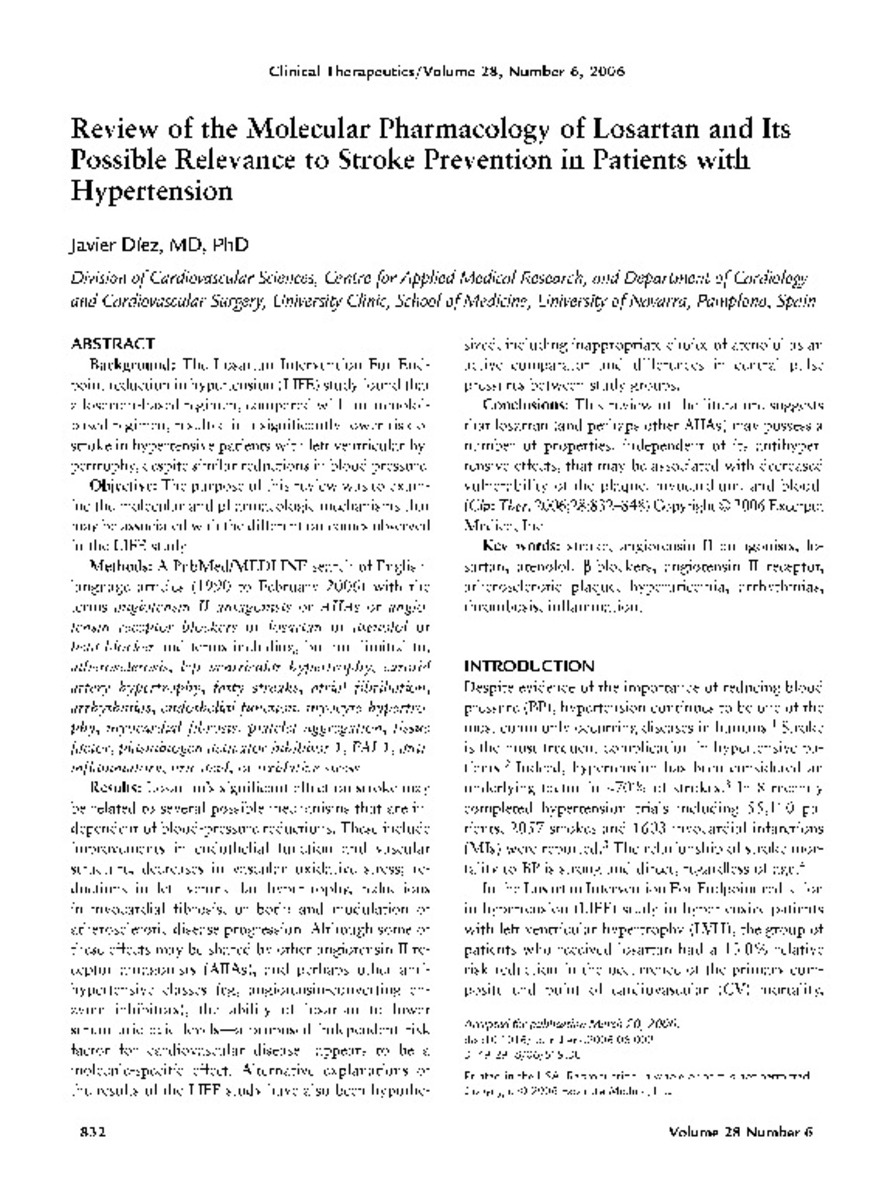Review of the molecular pharmacology of Losartan and its possible relevance to stroke prevention in patients with hypertension
Keywords:
Stroke
Angiotensin II antagonists
Losartan
Atenolol
beta-Blockers
Angiotensin II receptor
Atherosclerotic plaque
Hyperuricemia
Arrhythmias
Thrombosis
Inflammation
Citation:
Diez J. Review of the molecular pharmacology of Losartan and its possible relevance to stroke prevention in patients with hypertension. Clin Ther 2006 Jun;28(6):832-848.
Statistics and impact
0 citas en

0 citas en

Items in Dadun are protected by copyright, with all rights reserved, unless otherwise indicated.










